What Operation Exit was like in the 70s: the Renault 5 reigned on less crowded and more dangerous roads

To understand what "Operation Exit" was like on Spanish roads in the 1970s, the decade in which the original Renault 5 (launched in 1972 and quickly became a phenomenon) began to populate the roads, we must transport ourselves to a very different reality than the current one.
Those summers were a microcosm of a Spain that was opening up to mass tourism and the incipient development of motorsports, but with very different infrastructures and habits.
The average salary in Spain in the mid-1970s was around 22,000 pesetas per month, equivalent to just over 120 euros today (although this conversion is merely illustrative and does not reflect actual purchasing power). The Interprofessional Minimum Wage (SMI) in 1977, for example, was set at 15,000 pesetas per month. At these figures, the purchase of basic necessities took up a significant portion of the family budget.
As for housing, the dream of owning a home was ambitious. An average apartment in a city like Lugo could cost close to 2 million pesetas (about 12,000 euros), while in parts of Madrid, an apartment was offered for 1.5 or 1.6 million pesetas. This meant that buying a home represented a colossal financial effort, often requiring decades of saving and debt, even for the middle class.
Shopping and leisure activities also had prices that seem ridiculous today. A loaf of bread cost around 4-5 pesetas in the early 1970s, and was approaching 50 pesetas in the late 1970s or early 1980s. Eating out was more of an exception than a daily custom; a restaurant meal could range from 600 to 975 pesetas.
Premium gasoline, the star fuel of the era, had a price of around 24 pesetas per liter in the mid-1970s. These prices, although low in absolute terms, should always be compared with the wages of the time, offering a clearer picture of the real cost of living.
In the 1970s, the Spanish car fleet was considerably smaller than it is today. Although the Renault 5 represented a modern and affordable car, owning a vehicle was still a luxury for many families.
While the Renault 5, launched in 1972 and winner of the first ABC Car of the Year Award in Spain, quickly became a symbol of modernity and efficiency, it shared the spotlight on our roads with a series of vehicles that defined the automotive landscape of Spain at the time. These cars not only transported people, but also dreams and the spirit of a rapidly evolving society.
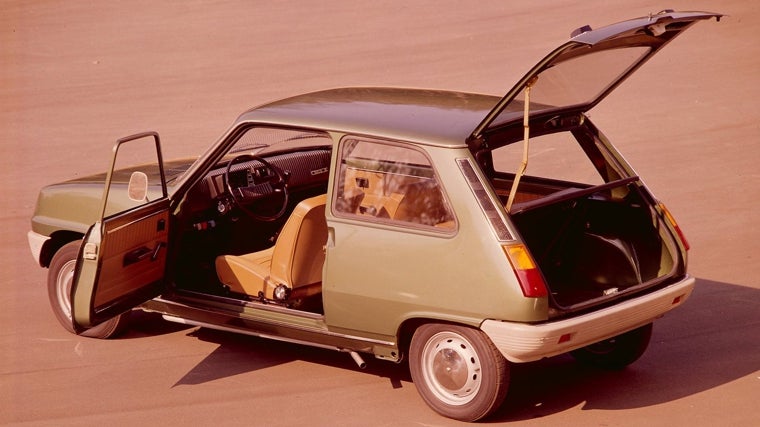 The original Renault 5 was awarded "Car of the Year in Spain" in 1973
FP
The original Renault 5 was awarded "Car of the Year in Spain" in 1973
FP
The undisputed king of Spanish roads at the beginning of the decade remained the Seat 600. Although its design dated back to the 1950s, its popularity continued into the early 1970s. It represented the middle class's entry into motorization, an economical and maneuverable car, ideal for narrow city streets and early family trips. Its rear engine of around 25 hp and its compact size made it agile, although somewhat limited on the highway. Its starting price, which in the 1970s was around 70,000 pesetas (about 420 euros today, but with a very different purchasing power), made it a viable option for many families.
With the arrival of the decade and the need for more modern and spacious vehicles, the Seat 127 (launched in 1972, the same year as the R5) emerged as a worthy successor to the 600 and a direct rival to the Renault 5. This model represented a revolution for Seat: a transverse front engine, front-wheel drive, and a wider, more functional design, available in 2- and 4-door versions. With engines starting at around 47 hp, it offered superior performance and greater comfort, becoming the best-selling car in Spain for several years. Its price was around 130,000 pesetas (about 780 euros), reflecting its modernity and superior features.
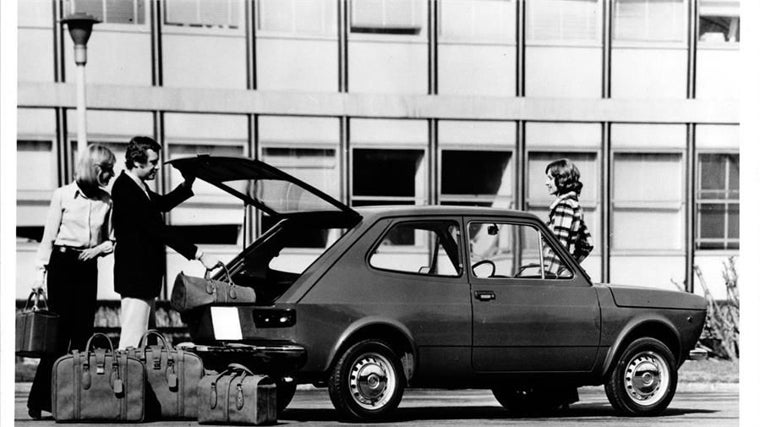 The SEAT 127 was the R5's great rival
FP
The SEAT 127 was the R5's great rival
FP
Another icon of the era that brought a touch of originality and robustness was the Citroën 2CV. Although its design was even more veteran than that of the 600, its soft suspension, versatility, and ability to adapt to any terrain (from asphalt to country roads) made it very popular, especially in rural areas and among the younger or bohemian population. Its twin-cylinder engine of just 9-12 hp was modest, but its lightness and simplicity were its strengths. The 2CV, priced at around 90,000 pesetas (about 540 euros), offered a different alternative to the sobriety of the Seat and the modernity of the Clio.
But not everything was utilitarian. Some of the most important family models of the time were also successfully produced in Spain. For example, the Seat 124. It was one of the most popular and representative family car options in 1970s Spain. Based on the successful Seat 124, its station wagon version offered a much larger trunk and a tailgate that made loading easier. It was robust and reliable, ideal for large families or those traveling with a lot of luggage.
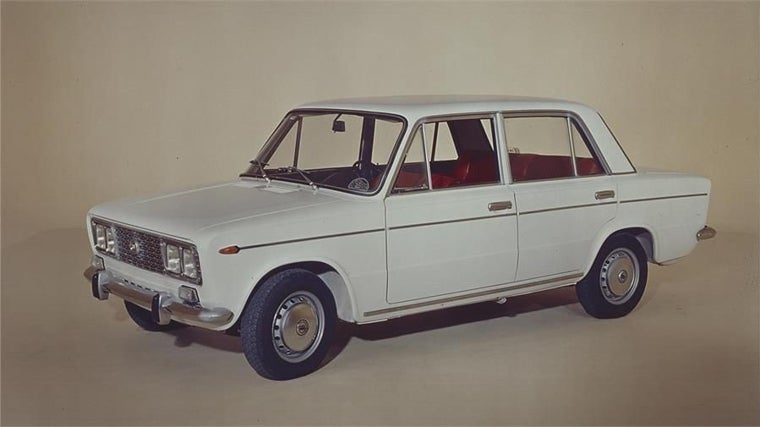 The SEAT 1430 was a comfortable and powerful sedan
FP
The SEAT 1430 was a comfortable and powerful sedan
FP
For those with more financial solvency and wanting more power, the Spanish brand's catalogue included the Seat 1430 Familiar: Derived from the 1430 (the most powerful and luxurious version of the 124), the 1430 Familiar combined the advantages of space with a higher-performance engine, making it suitable for longer, more heavily loaded trips.
An alternative was the Renault 12, produced by FASA-Renault in Spain. This car was another mainstay of Spanish families in the 1970s. Its station wagon version, with its elongated design and large cargo capacity, was highly valued for its reliability and comfort on the road.
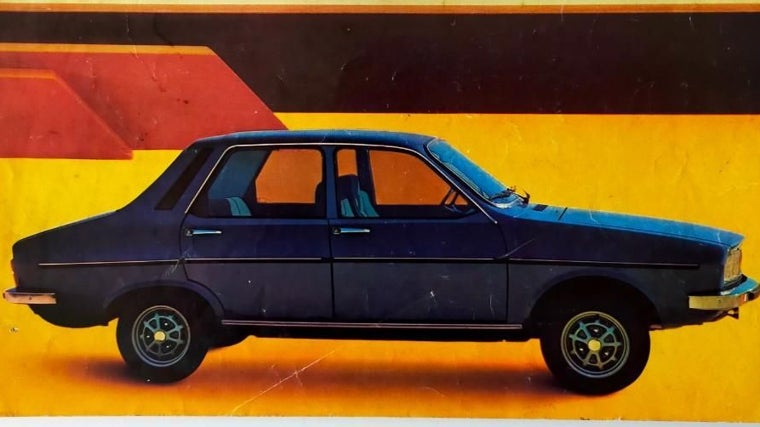 Renault 12 manufactured by FASA
FP
Renault 12 manufactured by FASA
FP
We can't forget the Simca 1200, which also had its Family (or "Break") version for family travel: This model, manufactured by Barreiros (later Chrysler Spain), also had a family version that was highly appreciated for its interior space and versatility.
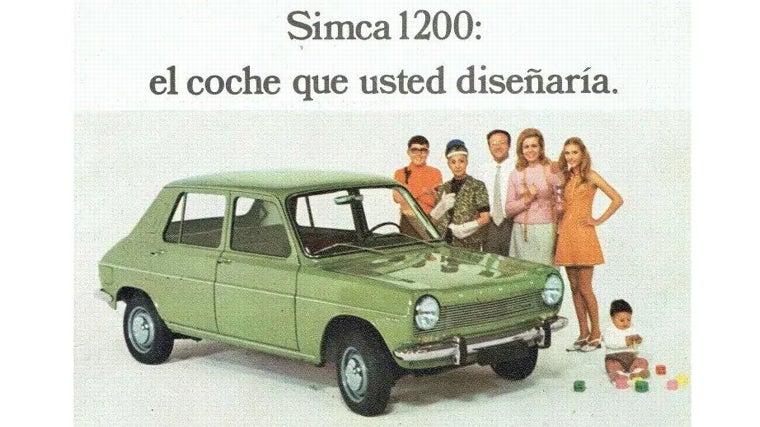 Advertisement from the Simca 1200 era
FP
Advertisement from the Simca 1200 era
FP
With the incipient development of mass tourism, the Spanish coast became the epicenter of family vacations, although staying in a hotel was still a considerable expense for many.
Far from the current diversity of options, the preferred destination par excellence for Spaniards was undoubtedly the beach. The Mediterranean and southern coasts established themselves as summer pilgrimage destinations, marking the beginning of a sun-and-sand tourism culture that endures to this day.
The beaches of the Levante region, such as the Costa Brava, the Costa Blanca (Benidorm, Alicante), and the Costa del Sol (Málaga), were the epicenters of summer vacations. The beaches of the Cantabrian Sea, such as those of Asturias and Cantabria, also attracted vacationers, especially from Madrid. These areas offered the much-desired rest and sun, and were beginning to develop tourist infrastructures adapted to growing demand, although still basic compared to today's sophistication. For many families, vacations still involved renting an apartment, using relatives' second homes, or even the booming camping scene, which offered a much more economical and adventurous option.
For many families, staying in a hotel was a luxury or a special occasion. Prices varied considerably depending on the category and location, but a night in a lower-middle-range coastal hotel could cost around 600-1,000 pesetas (approximately between 3.6 and 6 euros, a very different value than today given inflation and the purchasing power of the time). While this seems paltry today, compared to the average monthly salary of around 22,000 pesetas, a week in a hotel could represent a significant portion of a person's salary. This explains why the most popular options were long-term vacation rentals, which allowed families to spend much of the summer on the coast at a more affordable cost.
International tourism was also beginning to take off strongly, especially in the Balearic and Canary Islands, bringing in foreign currency and contributing to the development of hotel infrastructure. However, the Spanish tourist of the 1970s, with their Renault 5 or Seat 127 loaded to the brim, had a vacation experience more focused on family, simplicity, and the enjoyment of nature, with the beach as the dream destination and the hotel as a comfort that wasn't always affordable for everyone.
The roads were packed during peak holiday periods, and traffic density didn't reach the mega-congestion levels of today. However, journeys were, paradoxically, longer and more tiring. Highways were scarce, and most trips were made on national and regional roads, single-carriageway, two-way roads. This meant constant overtaking, slow speeds due to the presence of trucks and agricultural vehicles, and much greater risk.
The DGT's (General Directorate of Traffic) road technology and traffic management resources were rudimentary compared to today's. There were no complex control systems, cameras, information panels, or helicopters as we have today.
Traffic regulation depended largely on the physical presence of Civil Guard Traffic officers, who manually directed traffic at critical points, especially at the exits and entrances to large cities and at coastal access points. Information on road conditions was primarily broadcast via radio, with bulletins issued at scheduled times.
The 1970s were characterized by a high road accident rate. The lack of adequate infrastructure combined with much more basic vehicle safety measures (less widespread and mandatory seat belts, lack of airbags, etc.) and a lower public awareness of the dangers of driving.
Drinking and driving was a more widespread problem, and traffic regulations were less strict or less enforced. Each "Operation Exit" was a logistical and safety challenge, with accident and fatality rates that would be unthinkable today. In this context, the Renault 5, with its agility and compact size, offered a new way of getting around, but it didn't exempt its occupants from the inherent risks of the roads of that time.
ABC.es





